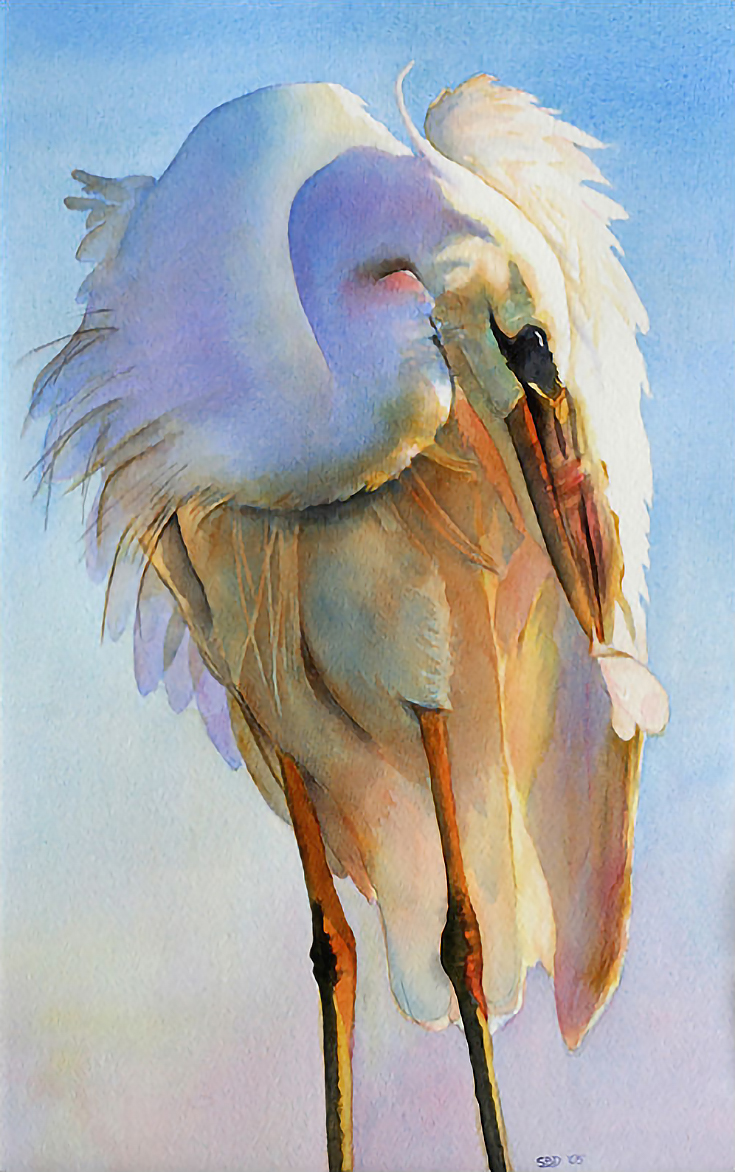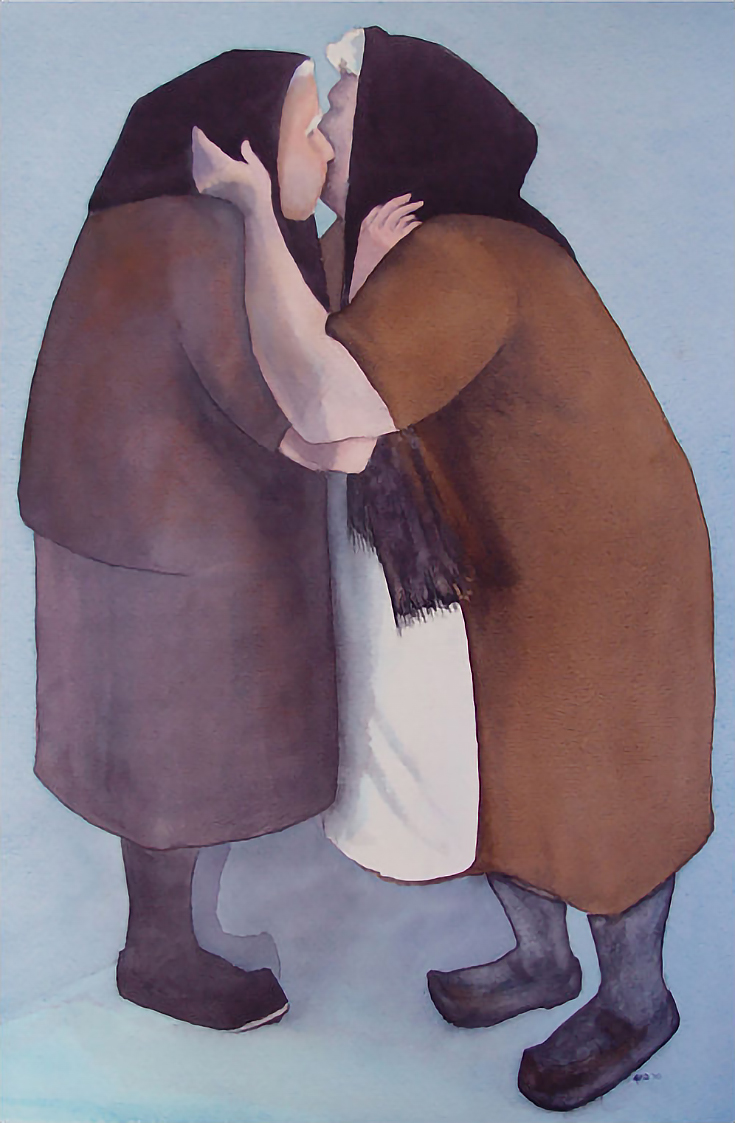
Although Sarah has already won several prestigious awards, and has illustrated several children’s books and toys (including Mom’s Choice Award winner, Flip Along Fun), she longs to get into the Salmagundi Club in NYC with one of her paintings.
Alyice: For those who have a hard time understanding how watercolor paints can be permanent, can you explain what watercolor paints are and how they work?
Sarah: Watercolor paints are a mixture of microscopic pigment particles, which provide the paint color, mixed in a liquid paint vehicle that holds the pigment in suspension, allows it to be applied with a brush, then dries to bind it to the support (paper, board or canvas).
The pigments do not dissolve in water and is why they are suspended in a “vehicle” like gum Arabic or synthetic glycol.
Manufacturers also have to add humectants like honey or corn syrup to moisturize and help bind the pigment to the paper. This, plus other ingredients, are suspended in water which transfers the pigments to the paper.
Alyice: Why did you choose watercolor as your medium?
Sarah: I mainly paint in watercolor because it has a very distinct look. I think I’m drawn to line and delicacy, and watercolor aids that. Different watercolor paints have different qualities such as granulation or transparency or no transparency. Each distinct trait gives you a different look depending on what you want to achieve.
Cobalt Blue, for instance, has a granulation that I like. It’s subtle, and the paint itself is considered “transparent.” If you use a lot of paint and don’t water it down, it loses its transparency, and becomes more opaque.
Alyice: What is the most challenging part about working with watercolors?
Sarah: People think watercolor is fixed once you lay it down, but I don’t agree. I, actually, think it’s quite easy to work with. You can scrape the paper, wash the paper, even use a razor blade on the paper. It all creates difference looks.
What is difficult for me is controlling the watercolor and not being driven by it. It has its own “look” and I like to be the one in charge, not the paint.
Alyice: What is the best part about working with watercolors?
Sarah: I love watching what happens as I layer a painting with translucent color, each color affecting the other. It’s always a bit of a mystery because the paint has its own properties which come into play.
Most watercolors are translucent to some degree, and add to or kill the under layer. Part of the learning curve with watercolor is understanding the properties of each color, and how it affects another color.
You have to work quickly, and really concentrate if you want to control the paint as it works its way down the page. Watercolor just has a unique beauty that you can’t duplicate with any other medium.
Alyice: How durable are your finished pieces?
Sarah: The paints that I use are what are called “lightfast.” I wouldn’t put them outside in the sunlight for several months, but I wouldn’t do that to an oil painting, either.
You can hang them inside, and they should outlast all of us. In fact, many museums have watercolors that have lasted centuries. The paints today are even more lightfast, and if treated properly, should last for centuries.
I place my paintings under glass (If you’re buying one from me that’s framed), and usually matted in an acid-free mat with acid-free backing board.
Alyice: What is your creative process like?
Sarah: I usually have to be moved by something, either the way the light plays on the subject or the subject itself shows a vulnerability. Something has to pull me or I have something stirring inside that I want to invent (such as the “Two Old Friends” seen above). I’m moved by what is under the veneer of today’s “cool.”
Alyice: How do you come up with a profitable pricing structure for your paintings?
Sarah: I figure the cost of paper, paint etc. Then I factor in my time and my knowledge of the medium and balance that against what the market can bear. I compare myself to other artists who are at the same level I think I am.
You can learn more about Sarah Dowling at SarahBuellDowling.com and more about her book, Flip Along Fun, at FlipAlongFun.com
This post may contain affiliate links.



